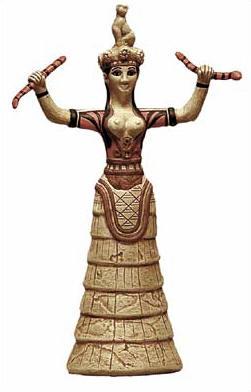Today is world snake day: maybe you should run out and do something nice for our scaly limbless friends (though don’t hug them—they don’t like that)! Sadly though, many people do not appreciate snakes. Not only are serpents taboo in the Abrahamic faiths (since, according to the creation myth, a snake convinced the original people to disobey the creator deity for the first time), humankind also seems to have an instinctual inbred panic reaction to them. Perhaps this is an evolutionary leftover from when our just-out-of-the-trees ancestors shared East Africa with a bevy of aggressive venomous snakes like the formidable black mamba (or whatever the mamba’s just-out-of-the-trees ancestor was). This human antipathy towards the Ophidia is a shame. Not only are snakes inimical to the rodents and bugs which spell true problems for modern agricultural humans, they are critical to most non-pelagic, non-Arctic ecosystems in numerous ways. Additionally, snakes are very beautiful. They are more colorful than most other creatures and they have a hypnotic sculptural beauty all their own. Just look at the lovely art photo by Guido Mocafico at the top of the page.
Other ancient religions were not as opposed to snakes as the Canaanites and Israelites (who, were, after all, herding people who lived in a dust colored-desert filled with poisonous dust-colored reptiles). Hindus respect the powerful nagas and worship Vasuki, the cobra-king of all snakes. Buddha was sheltered by a hooded cobra. The Chinese creation myth centers on Nüwa, the serpent-goddess who first gave life to animals and humans. In ancient Greece, snakes represented the secrets of the underworld, the healing power of medicine, and the foresight of divine augury. The pre-Greek Cretan culture worshiped a sinuous bare-breasted snake goddess who held a serpent in each hand as she danced. Sadly we know little about this compelling deity other than what is revealed by sculpture.
Going back even farther, the oldest written story humankind currently possesses features a snake as a villain: after all of his trials, Gilgamesh loses the herb of immortality when it is stolen by a water snake. People from the Fertile Crescent really seem to dislike snakes…although that presumes that the Biblical serpent actually was the villain. Maybe the snake was the real hero of Genesis (after all, it is never demonstrated that the tree of knowledge does not perform as advertised). Don’t we long to become as Gods? Isn’t wisdom our greatest collective treasure? What is so great about obedience? After all, did we really want to live forever as naked childlike near-beasts? Perhaps the snake is a pivotal figure in imagining our transition from hunter-gatherers to agricultural folk–which is to say from nature to civilization.
If the snake does represent our coming of age it is ironic: the majority of city-dwelling modern humans probably never see wild snakes in our monstrous concrete cities. This strikes me as a shame. For good or for ill, there really is something sacred about the snake.






7 comments
Comments feed for this article
July 16, 2014 at 11:03 PM
GarryRogers
Very interesting article. I scooped and reblogged it.
July 17, 2014 at 9:08 AM
Mike
How does all of this mesh with St. Patrick going into a drunken rage and beating all the snakes in Ireland to death with a shillelagh?
July 17, 2014 at 9:56 PM
Wayne
That sounds like the Judeo-Christian anti-snake bias at work again (but could also just be an example of the Irish temperament).
July 17, 2014 at 10:29 AM
Bridget Syms
Great article with stunning images. Our adders (our only venomous snake in the UK ) are enjoying the sun, we have to be cautious walking the dogs that we don’t tread on them. They are shy and really don’t want anything to do with us, but so beautiful if you are lucky enough to see them.
July 17, 2014 at 9:57 PM
Wayne
Ooh–they sound pretty (and a bit scary).
August 6, 2017 at 11:12 PM
Dan
Serpents aren’t actually taboo in the Abrahamic faiths with which I am intimately familiar (Christianity and Judaism).
Christ is actually (and clearly) representative of a serpent, and the kabbalistic teaching, even when looked at in terms of its most well known symbolism and thus in lieu of deep knowledge of it, also endorses serpent worship (as does the entirety of the Jewish system). Though, remember that the serpent is a symbol of something else. Remember that the Seraphim are the closest beings to god.
Any religion past ancient shamanism and nature worship was designed to suit a sociopolitical purpose. The biblical creation myth is designed to teach according to a sociopolitical purpose. In such systems, there is generally an esoteric and exoteric teaching. One teaching for rulers, and the other for the ruled / slaves. Why? Because ethnic superiority is generally the goal for most tribes, and running a multicultural empire is a bitch. You can’t give the plebs the keys to the throne.
Unlock the two streams, and you will unlock the myth, it’s purpose, and what it is hiding. Look to foreign religions that don’t hide the esoteric teaching, but institutionalize it for the masses. Look for rabidly ethnocentric tribes (no, not Jews). To find the teaching, look to differences in how the symbols (in this case the serpent) is represented.
September 7, 2021 at 12:55 AM
gunst01
Reblogged this on Die Goldene Landschaft.